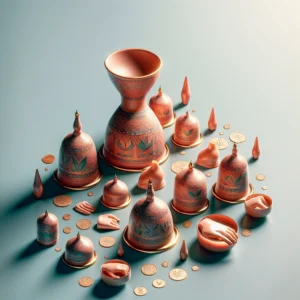Unlock Your Health and Wellness with Hijama Wet Cupping Therapy: An In-Depth Guide
Hijama, commonly referred to as wet cupping therapy, is a time-honored healing technique that employs suction cups to draw blood from the skin’s surface, promoting detoxification and overall wellness. This intriguing process involves making tiny incisions to facilitate blood extraction, which is believed to aid in eliminating harmful toxins from the body. The cups can be made from various materials including glass, bamboo, or silicone and are strategically placed on specific body regions to create a vacuum effect. This action not only enhances blood circulation but also fosters holistic health and well-being, making it a sought-after therapy in many health circles.
During a session of Hijama, the suction is believed to invigorate blood flow while enhancing the body’s innate healing abilities. Patients often describe a unique sensation of tightness or pulling where the cups adhere to their skin. Despite its unconventional nature, many individuals find the experience to be remarkably calming, frequently leading to a profound sense of relaxation and an overall improvement in wellness after their treatment. This therapy not only addresses physical ailments but also contributes significantly to mental and emotional well-being.
Even if Hijama is a new concept for many, its therapeutic advantages have gained considerable recognition, increasingly making it a preferred option among holistic health enthusiasts. Exploring the complexities of this ancient practice may reveal its invaluable role in enhancing personal health and well-being, offering a unique approach to self-care and healing.
Key Benefits and Insights into Hijama Wet Cupping Therapy
- Hijama Wet Cupping Therapy is a respected alternative medicine practice that utilizes suction to promote healing and enhance blood flow, providing a natural approach to wellness.
- This technique boasts historical significance across various ancient cultures, including Egyptian, Chinese, and Middle Eastern societies, offering a natural remedy for countless health issues for centuries.
- The extensive advantages of Hijama Wet Cupping Therapy include pain relief, improved circulation, detoxification, and an overall calming effect on the body and mind.
- The Hijama method involves creating small incisions on the skin before applying cups to draw out blood and impurities, enhancing the detoxification process.
- Conditions like migraines, back pain, arthritis, and respiratory issues can benefit significantly from the therapeutic effects of Hijama Wet Cupping Therapy.
 Discovering the Rich History and Evolution of Hijama Wet Cupping Therapy
Discovering the Rich History and Evolution of Hijama Wet Cupping Therapy
The roots of hijama can be traced back thousands of years, with references documented in ancient Egyptian, Greek, and Chinese medical texts. Notably, Hippocrates, often referred to as the father of modern medicine, highlighted its effectiveness in addressing a wide variety of health concerns. Within Islamic culture, Hijama holds significant respect and is frequently mentioned in Hadiths—the sayings attributed to the Prophet Muhammad—underscoring its importance in these traditions.
This cultural endorsement has solidified Hijama’s enduring popularity, particularly among Muslim communities. By delving into the extensive history of Hijama, you will uncover its dual purpose: addressing physical ailments while simultaneously promoting emotional and spiritual healing. Ancient practitioners believed that by removing stagnant blood and toxins, they could restore both physical vitality and emotional harmony.
Throughout the centuries, Hijama has adapted, integrating diverse techniques and philosophies from various cultures, resulting in the modern practice we recognize today. Hijama is now embraced worldwide, with practitioners tailoring traditional methods to meet contemporary health needs and preferences.
Exploring the Comprehensive Therapeutic Benefits of Hijama Therapy
The therapeutic benefits of Hijama wet cupping therapy are both extensive and profound. Many individuals report notable relief from chronic pain conditions such as migraines, back pain, and arthritis after undergoing treatment. The suction created by the cups is believed to enhance circulation, leading to reduced inflammation and a quicker recovery from injuries. This aspect of therapy is particularly appealing for those seeking alternatives to conventional pain management strategies.
In addition to its physical benefits, many find that Hijama therapy helps alleviate stress and anxiety, contributing significantly to an enhanced sense of overall well-being. Practitioners also associate Hijama with detoxification, as the process is believed to effectively purge impurities from the bloodstream. This cleansing action can result in higher energy levels and a bolstered immune response, making it a popular choice for those looking to enhance their vitality.
As you contemplate the potential benefits of this therapy, it’s crucial to recognize that individual experiences may vary significantly. While some may experience substantial relief, others might not notice immediate changes. However, many practitioners recommend regular sessions as a vital component of a holistic health and wellness regimen, emphasizing the therapy’s cumulative benefits over time.
 A Comprehensive Overview of the Hijama Process: Essential Information You Need
A Comprehensive Overview of the Hijama Process: Essential Information You Need
When you arrive for your Hijama session, your practitioner will typically begin with a thorough discussion of your health history and any specific concerns you wish to address. This initial consultation is critical for tailoring the treatment to fit your unique needs effectively. After ensuring your comfort, the practitioner will identify specific areas of your body for treatment, often selecting points that align with your symptoms or areas experiencing tension.
The therapy usually commences with dry cupping, where cups are placed on your skin to create suction without any incisions being made at first. After a short duration, the cups are taken off, and small incisions are made on the skin using a sterile blade or lancet. The cups are then reapplied to extract a carefully controlled amount of blood.
Though this part of the process may seem intimidating, many individuals report only minor discomfort during the incisions. Each session typically lasts between 30 minutes to an hour, depending on your personalized treatment plan, ensuring a thorough yet comfortable experience.
Identifying Conditions and Ailments Addressed by Hijama Therapy
Hijama wet cupping therapy is utilized to alleviate a broad spectrum of conditions and ailments. Many practitioners endorse its effectiveness for addressing musculoskeletal issues, including back pain, neck pain, and joint discomfort. Athletes often turn to Hijama for muscle recovery and injury prevention, capitalizing on its ability to boost circulation and decrease inflammation for enhanced performance and recovery.
In addition to providing relief for physical pain, Hijama is also believed to assist with respiratory conditions such as asthma and bronchitis, promoting optimal lung function and aiding in mucus clearance. Some individuals pursue this therapy to address digestive issues and hormonal imbalances. As you explore the various applications of Hijama, it’s essential to consult with a qualified practitioner who can guide your treatment to align with your specific health concerns and goals.
 Important Safety Considerations and Potential Risks of Hijama Wet Cupping Therapy
Important Safety Considerations and Potential Risks of Hijama Wet Cupping Therapy
While Hijama wet cupping therapy is generally regarded as safe when performed by a trained professional, there are several risks and precautions that should be considered. Temporary side effects, such as bruising or mild discomfort at the cupping sites or incisions, may occur; however, these effects typically resolve within a few days, allowing patients to return to their normal routines quickly.
Ensuring that your practitioner adheres to rigorous hygiene protocols is essential to minimize the risk of infection. Certain individuals should approach Hijama with caution or avoid it altogether. If you have bleeding disorders, are pregnant, or suffer from specific skin conditions, it is vital to discuss these factors with your practitioner before undergoing treatment. This open dialogue will ensure you receive care tailored to your needs and health status.
By staying informed about potential risks and maintaining transparent communication with your provider, you can make a well-informed decision regarding the appropriateness of Hijama therapy for your wellness journey, ensuring a safe and effective experience.
The Growing Popularity of Hijama: Embracing a Modern Movement in Holistic Health
In recent years, there has been a remarkable resurgence of interest in alternative therapies, particularly Hijama wet cupping therapy. As more individuals seek holistic health solutions, this ancient practice has reestablished its relevance in both Eastern and Western societies. Social media has significantly aided in spreading awareness and knowledge about Hijama, with many users enthusiastically sharing their positive experiences and outcomes online.
The increasing popularity of Hijama can also be attributed to the broader acceptance of integrative medicine, which merges traditional treatments with alternative therapies for a more comprehensive healthcare approach. As you track this trend, you may notice that more wellness centers and clinics are incorporating Hijama into their service offerings, making it increasingly accessible for those interested in exploring its potential benefits. This accessibility is crucial in fostering a greater understanding of Hijama’s therapeutic advantages.
 Tips for Finding a Qualified Practitioner for Effective Wet Cupping Therapy
Tips for Finding a Qualified Practitioner for Effective Wet Cupping Therapy
Finding a qualified practitioner for Hijama wet cupping therapy is essential to ensure both safety and effectiveness during your therapeutic experience. Begin your search by looking for local practitioners who specialize in this therapy; many holistic health centers or acupuncture clinics often include Hijama among their wellness services. It’s crucial to seek practitioners who have received formal training in cupping techniques and possess a proven track record of successfully treating various health conditions.
Before scheduling your session, consider reaching out for an initial consultation to discuss your health concerns and learn about their treatment approach. A reputable practitioner will take the time to understand your needs and provide a comprehensive explanation of the treatment process. Additionally, reading reviews or seeking recommendations from friends or family can help you find a practitioner who aligns with your health and wellness goals, ensuring a supportive and effective experience.
By taking these thoughtful steps, you can confidently embark on your journey into Hijama therapy, assured that your chosen practitioner possesses the necessary skills and expertise to guide you through this unique healing process.
Common Questions About Hijama Wet Cupping Therapy
What is Hijama wet cupping therapy?
Hijama wet cupping therapy is a traditional alternative medicine technique in which a therapist applies cups to the skin to create suction. This process is believed to facilitate healing by enhancing blood flow, reducing inflammation, and promoting overall well-being.
How does Hijama wet cupping therapy work?
During Hijama wet cupping therapy, the therapist makes small incisions on the skin and then places a cup over the incision to create suction. This method draws a small amount of blood, which is thought to assist in removing harmful substances from the body, thereby encouraging healing and recovery.
What are the benefits of Hijama wet cupping therapy?
Advocates of Hijama wet cupping therapy assert that it can aid in addressing numerous conditions, including pain relief, inflammation reduction, enhanced blood circulation, detoxification, and improved relaxation. However, scientific backing for these claims remains limited, highlighting the need for further research.
Is Hijama wet cupping therapy safe?
When performed by a trained and qualified therapist, Hijama wet cupping therapy is generally regarded as safe. Nonetheless, there is a risk of infection if proper hygiene and sterilization protocols are not adhered to, emphasizing the importance of receiving treatment from a reputable and experienced practitioner to ensure safety.
What side effects might occur from Hijama wet cupping therapy?
Some potential side effects of Hijama wet cupping therapy may include temporary discomfort, bruising, and mild skin irritation at the cupping site. Rarely, there may be a risk of infection or scarring, reinforcing the need for proper care and hygiene during treatment.
Who should avoid Hijama wet cupping therapy?
Hijama wet cupping therapy is not recommended for individuals with specific medical conditions, such as hemophilia, leukemia, or those who are pregnant. Consulting with a healthcare professional before undergoing this therapy is essential, particularly for individuals with underlying health issues, ensuring safe and appropriate care.
Presented By: Hijama Therapy
The Article: Hijama Wet Cupping Therapy Benefits You Should Know appeared first on https://mcrtherapies.co.uk
The Article Benefits of Hijama Wet Cupping Therapy You Need to Know appeared first on https://mcrtherapies.com/”>https://mcrtherapies.com
The Article Hijama Wet Cupping Therapy: Essential Benefits to Discover Was Found On https://limitsofstrategy.com





Comments are closed